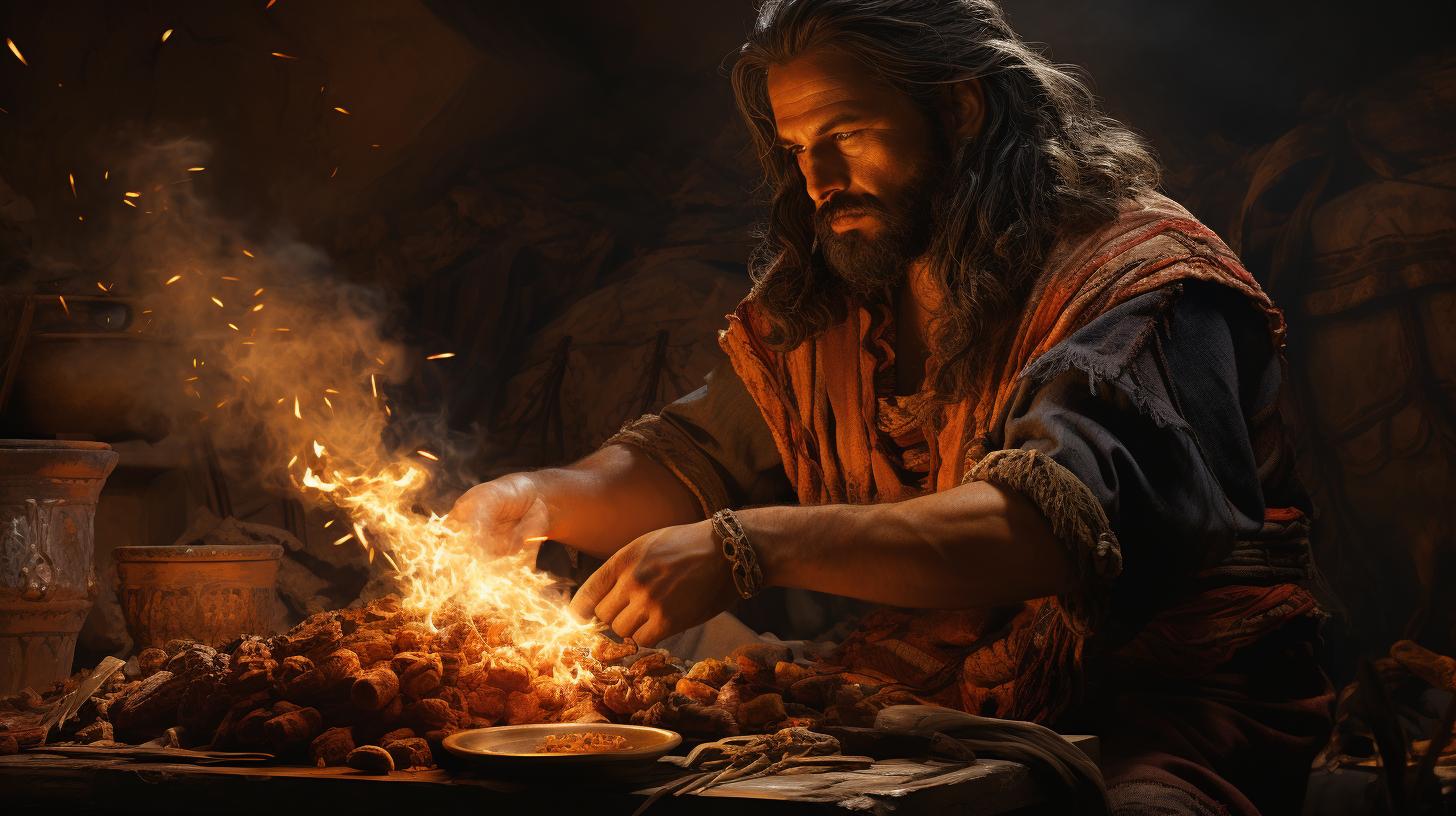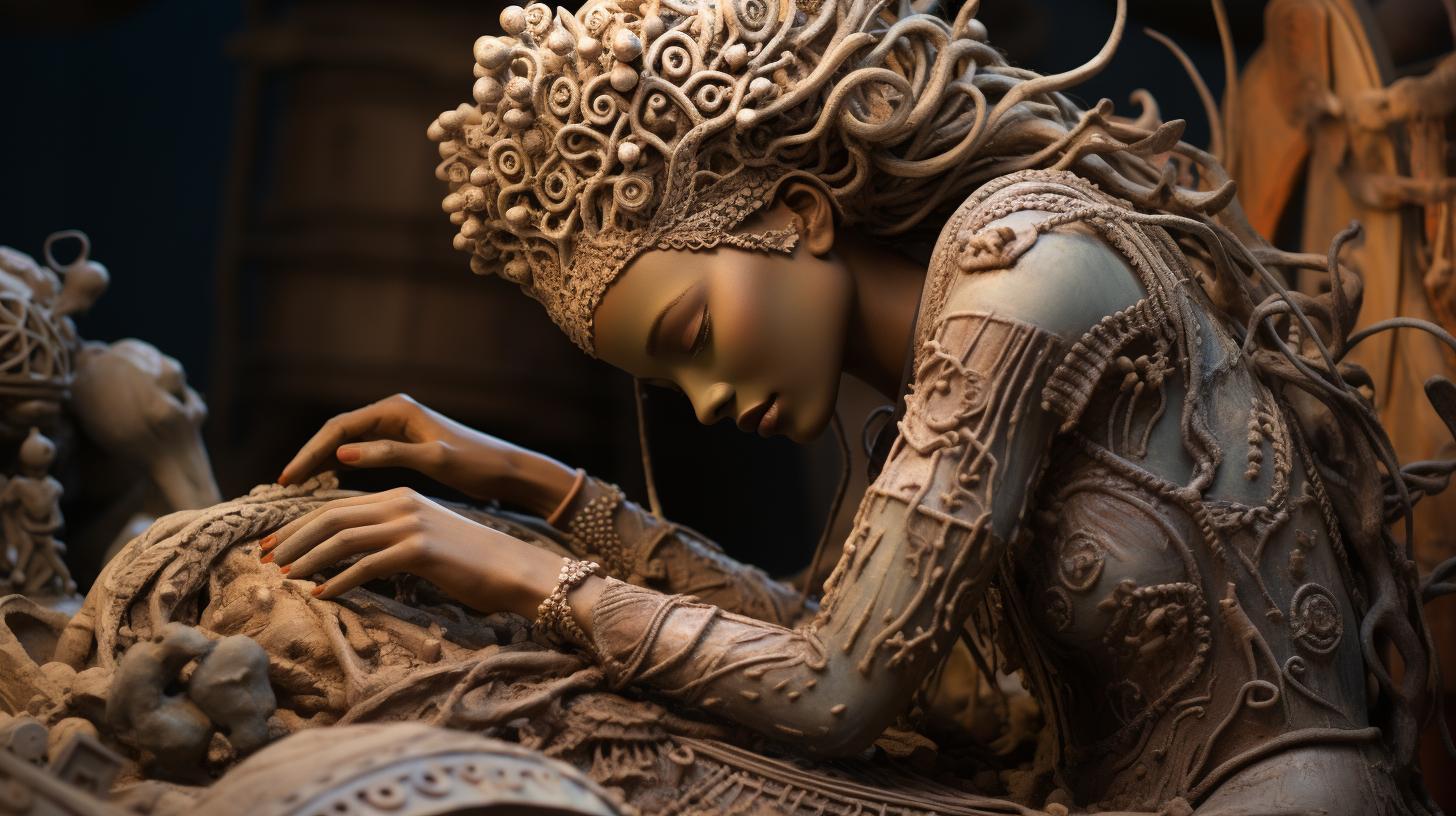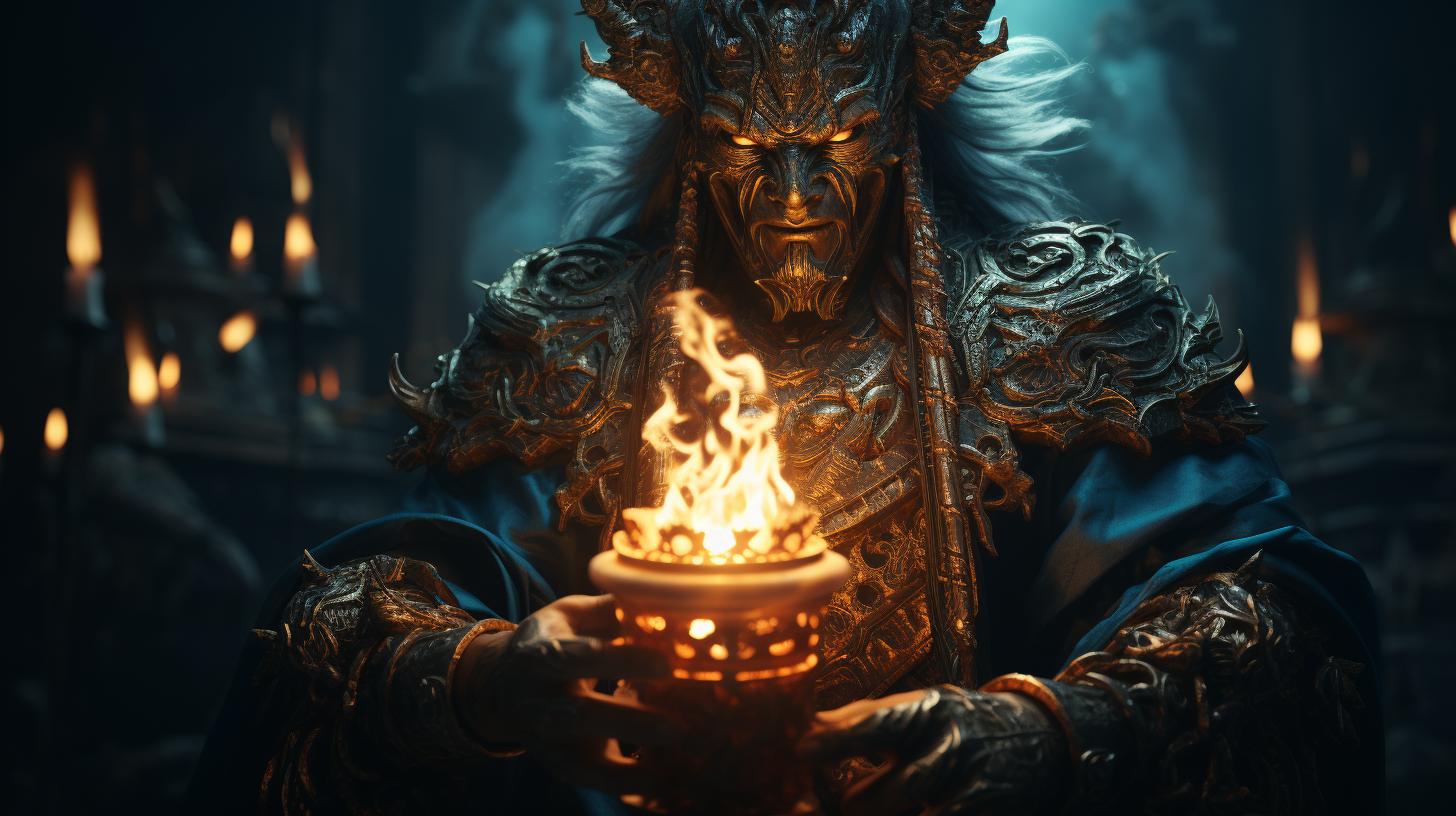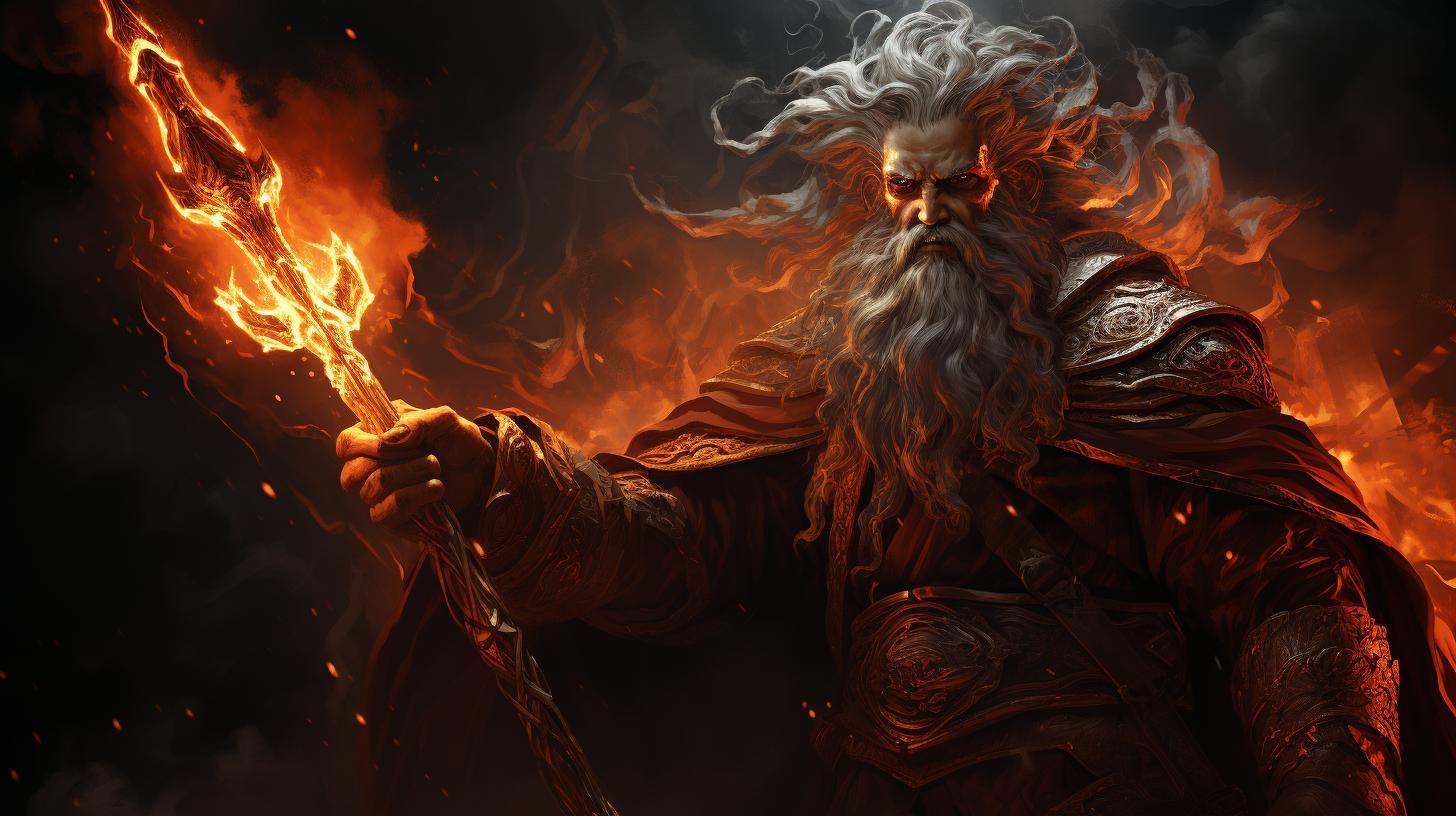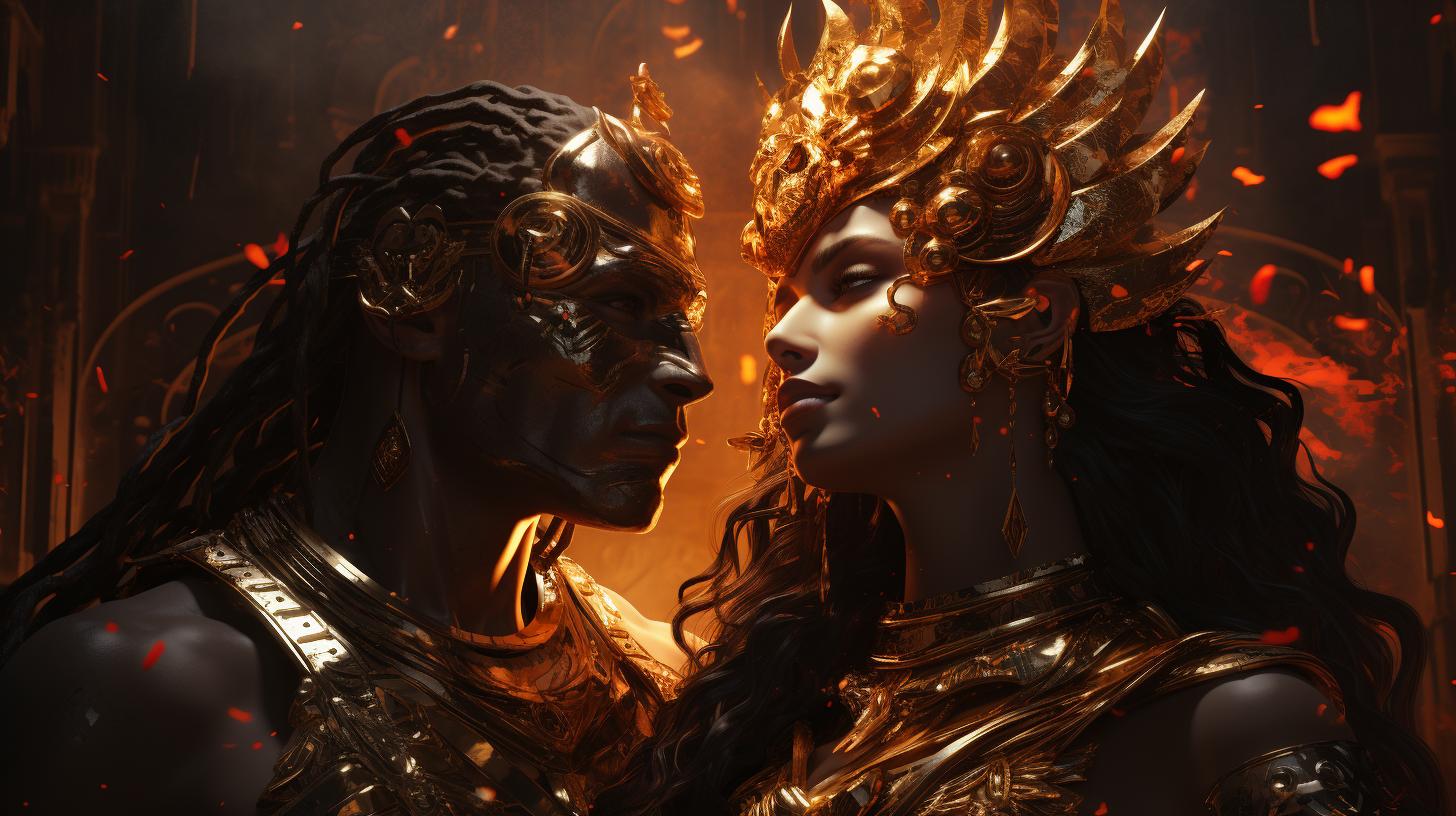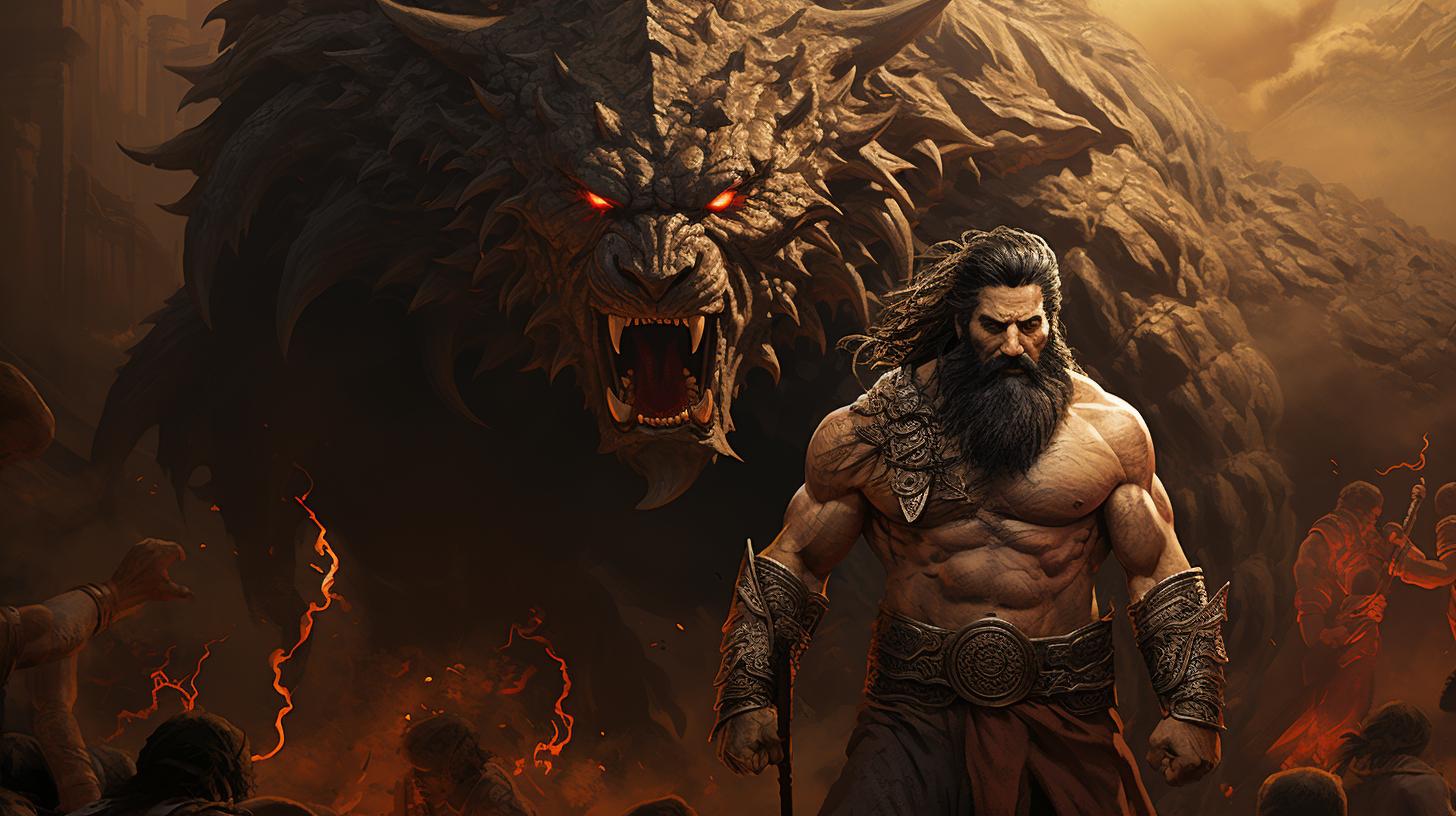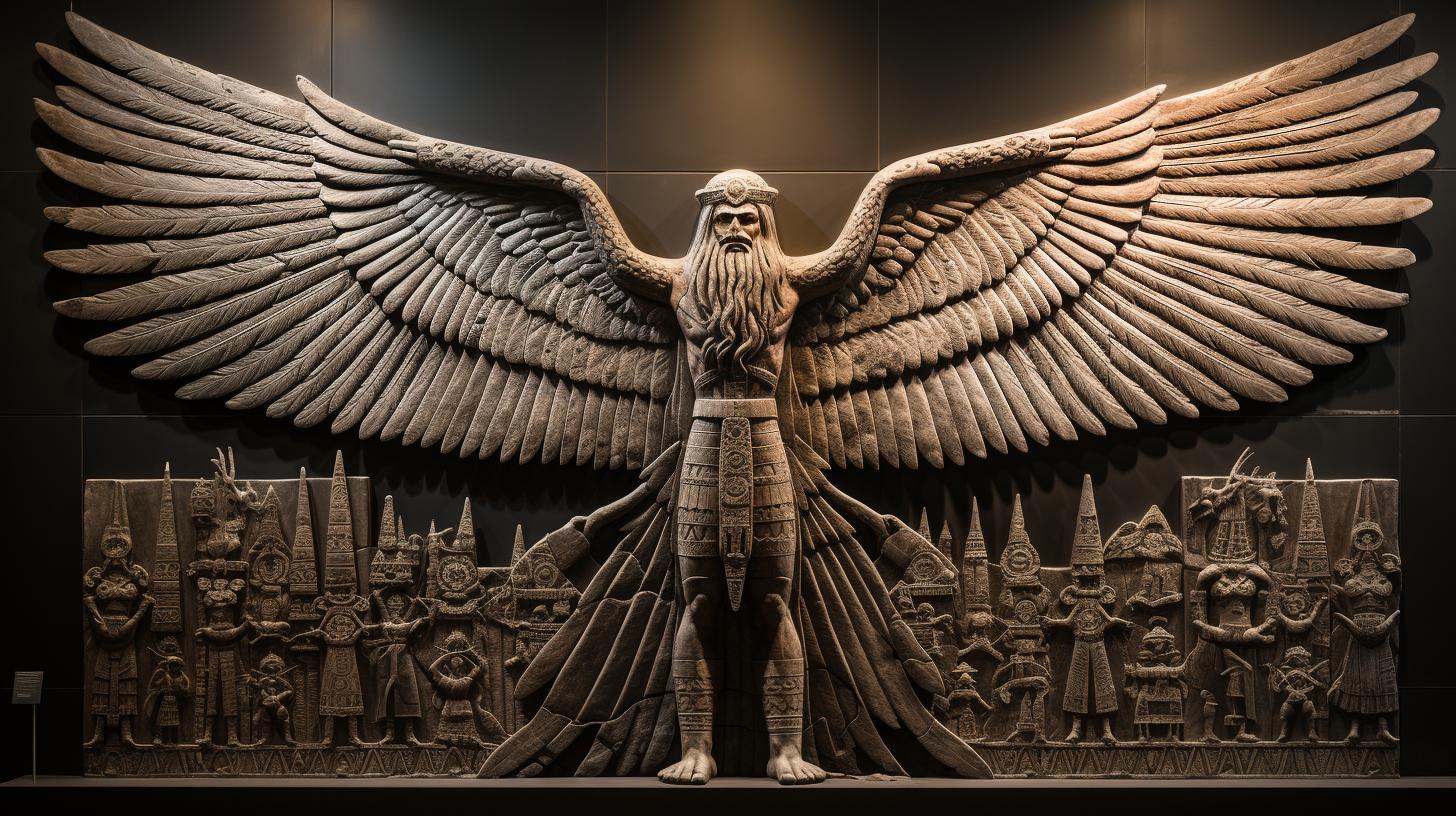Nuska: The Sumerian God of Fire Unveiled – Unleashing Ancient Power and Divine Protection
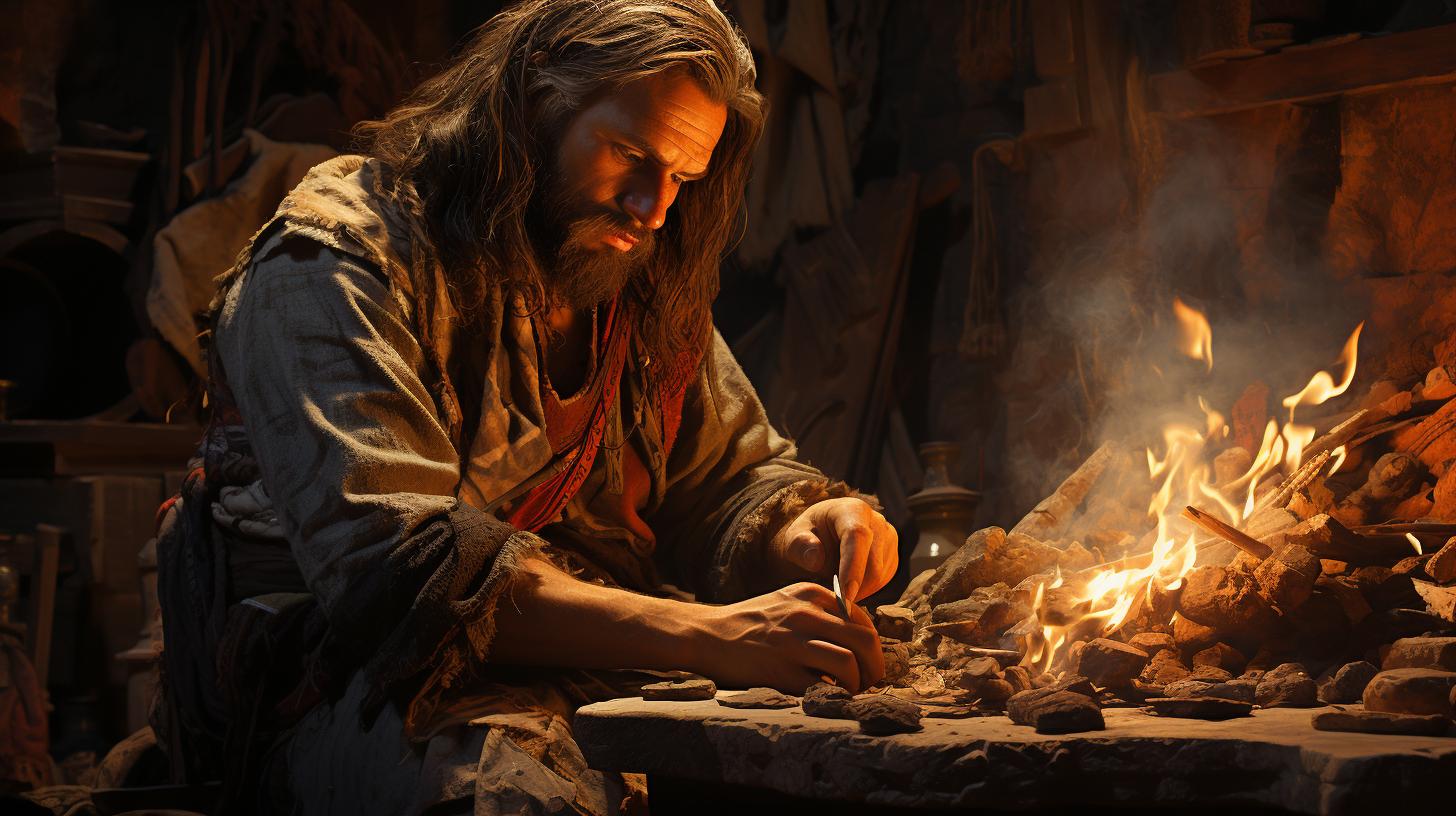
Nuska, the Sumerian god of fire, was revered as a divine protector and associated with Enlil, the chief deity. Known as both Nuska and Nusku, he wielded symbols such as a staff, lamp, and rooster.
Nuska’s worship centered primarily in Nippur but extended beyond Mesopotamia to Elam and Egypt. As a trusted visir, Nuska safeguarded against malevolent spirits like Lamashtu and Gallu, while also ensuring peaceful dreams during the night.
Despite uncertain origins, his name potentially signifies “lord of the scepter.” Join us on an exploration of this ancient deity’s significance and mythological heritage.
Overview of Nuska: The Sumerian God of Fire
Nuska, the revered god of fire in Sumerian mythology, held a significant position among the divine pantheon.
His association with Enlil, the chief deity, elevated his status as the divine visir or sukkal. Known by the names Nuska and Nusku, this powerful entity was invoked as a protective deity against malevolent forces, such as Lamashtu and gallu.
Symbolically represented by a staff, a lamp, and a rooster, Nuska’s influence extended beyond the realms of fire and light. While the etymology of his name remains ambiguous, scholars propose its meaning to be ‘lord of the scepter,’ signifying his authority and power.
Nuska’s connection with the god of fire, Gibil, further enhanced his importance in the celestial hierarchy, alongside other court attendants of Enlil, like Shuzianna and Ninimma. Primarily associated with Nippur, Nuska was worshipped fervently in this religious center.
However, evidence suggests his veneration spread beyond Mesopotamia, reaching far-flung places such as Elam and Egypt.
The mythology surrounding Nuska portrays him as a devoted servant of Enlil, diligently carrying out his duties.
One of his significant roles was providing protection during the night, bestowing peaceful dreams and safeguarding against nightmares. As the son of various deities in different traditions, Nuska’s divine lineage added to his esteemed position in Sumerian belief systems.
In summary, Nuska, the Sumerian god of fire and light, played a crucial role as Enlil’s visir. With his protective qualities against demonic entities, association with fire, and his role in ensuring restful nights, Nuska’s significance persisted throughout Mesopotamian culture and extended beyond its borders.
The Mythological Origins of Nuska
The origins of Nuska, the Sumerian god of fire, hold great significance in understanding his divine status and role. This section explores Nuska’s relationship with Enlil, the chief deity, and other gods, as well as the symbolism and attributes associated with him.
Nuska’s Relationship with Enlil and Other Deities
Nuska held a close association with Enlil, serving as his trusted visir or advisor. As the divine representative of Enlil, Nuska played a pivotal role in carrying out his commands and ensuring divine order.
Nuska’s connection with Enlil elevated his status and made him a prominent figure in Sumerian mythology.
Furthermore, Nuska shared strong ties with other gods, including Gibil, the god of fire, and Enlil’s other courtiers like Shuzianna and Ninimma. These relationships highlight Nuska’s widespread influence within the divine pantheon and his role as a respected and revered deity.
The Symbolism and Attributes of Nuska
Nuska was depicted with various symbols that conveyed his significance and power. One of his notable symbols was a baston, representing his authority and role as Enlil’s visir. Additionally, a lamp symbolized Nuska’s association with light and illumination, often seen as a metaphor for knowledge and protection.
Another symbol associated with Nuska was a rooster or a cock, demonstrating his connection to dawn, awakening, and rejuvenation. This symbolism further emphasized Nuska’s role in warding off darkness and bringing forth divine light and protection.
Moreover, Nuska’s attributes as a protector against demons like Lamashtu and gallu highlighted his role in safeguarding the Sumerian civilization from malevolent forces. His ability to provide good dreams and prevent nightmares during the night further solidified his reputation as a guardian and benefactor.
In conclusion, the mythological origins of Nuska reveal his close ties with Enlil and other deities, as well as the symbolism incorporated into his depiction. Understanding these origins and attributes allows us to grasp the importance of Nuska in Sumerian mythology and the vital role he played as the god of fire and divine protection.
Worship and Cult Centers of Nuska
Exploring the worship and cult centers of Nuska provides valuable insights into the significance and popularity of this revered Sumerian deity. Let’s delve into the main locations where Nuska was worshipped and venerated.
Nippur: Nuska’s Principal Center of Worship
Nippur, located in ancient Mesopotamia, stood as the principal center of worship for Nuska. The inhabitants of this city held deep reverence for Nuska as the god of fire and light.
Rituals and ceremonies dedicated to Nuska took place in grand temples and sanctuaries, where offerings and prayers were offered to seek his protection and guidance. The worship of Nuska played an integral role in the religious and cultural fabric of Nippur, solidifying his esteemed position among the Sumerian pantheon.
Nuska’s Worship Beyond Mesopotamia: Evidence from Elam and Egypt
The influence of Nuska extended beyond the borders of Mesopotamia, as evidence suggests his worship in regions like Elam and Egypt. Elam, an ancient civilization situated in present-day Iran, embraced Nuska as part of their religious practices, recognizing his powers as the god of fire.
Similarly, traces of Nuska’s cult have been found in ancient Egypt, highlighting his widespread recognition and following outside of Sumerian territories. The presence of Nuska’s worship in these distant lands illustrates the extensive reach and impact of his revered status as a divine entity.
Join us in the following sections as we uncover Nuska’s role as a protector and divine visir, shedding light on the various aspects and responsibilities associated with his divine presence.
Nuska’s Role as a Protector and Divine Visir
A crucial aspect of Nuska’s reputation and significance lies in his role as a protector against malevolent forces and his position as a trusted divine visir.
Let’s explore two significant aspects of Nuska’s role: his protection against demons such as Lamashtu and Gallu, and his association with ensuring good dreams and preventing nightmares.
Nuska’s Protection Against Demons: Lamashtu and Gallu
Nuska was invoked by the ancient Sumerians as a formidable ally against powerful demons like Lamashtu and Gallu.
Lamashtu, also known as the “Child-Slayer,” was believed to bring harm to newborns and pregnant women. Gallu, on the other hand, was a fearsome demon associated with chaos and destruction.
Nuska’s presence was thought to ward off these malevolent forces, serving as a protective barrier for communities and individuals.
This aspect of Nuska’s role as a guardian against demons further solidified his reputation as a deity to be revered and sought after for divine protection.
Nuska’s Association with Good Dreams and Prevention of Nightmares
Another intriguing facet of Nuska’s portfolio was his connection to dreams.
Nuska was believed to have the power to influence the quality of dreams and prevent nightmares during the night. As the night unfolded, Nuska would watch over individuals, ensuring they experienced restful sleep and pleasant dreams.
This association with good dreams and the prevention of nightmares was of great significance to the Mesopotamian people, as they placed immense value on the realm of dreams and their potential meanings.
Nuska’s role in ensuring peaceful sleep and positive dream experiences depicted him as a benevolent deity, showering his followers with divine blessings.
Through his roles as a protector against demons and a guardian of dreams, Nuska held a crucial place in the spiritual beliefs and practices of the ancient Sumerians.
His divine powers provided comfort and security to those who sought his aid, making him a revered figure in their religious pantheon.
Interpretations and Etymology of Nuska’s Name
Unraveling the mysteries surrounding Nuska’s name has been a subject of scholarly discourse. Though its precise origin remains unknown, several proposed interpretations shed light on its possible meanings and significance.
Proposed Meanings and Significance: ‘Señor del Cetro’
One interpretation suggests that Nuska’s name, ‘Señor del Cetro,’ signifies his authority and power.
The term ‘cetro’ is associated with rulership and control, reflecting Nuska’s divine role as a guardian and protector. As the visir of Enlil, Nuska wielded immense influence and played a crucial role in maintaining order within the divine realms.
Theories and Speculations on Nuska’s Exact Origins
While scholars continue to debate Nuska’s precise origins, various theories offer intriguing insights. Some propose that he may have emerged from the fusion of multiple deities, symbolizing the integration of different religious traditions.
Others speculate that Nuska could be an indigenous Sumerian deity, representing a specific aspect of fire and light, associated with Enlil’s court and Nippur’s religious traditions.
Another theory suggests potential influences from neighboring cultures, such as Elam and Egypt.
Nuska’s presence in these regions indicates possible cross-cultural connections and the assimilation of religious practices. It implies that Nuska’s worship extended beyond Mesopotamia, reflecting his transcendent stature and the spread of Sumerian religious beliefs.
In conclusion, Nuska’s name holds deep significance, invoking notions of authority and power, as well as alluding to his role as a divine guardian. While the exact origins of his name and divinity remain elusive, theories propose diverse possibilities, including associations with Enlil’s court, Sumerian religious traditions, and potential cross-cultural influences.
These interpretations contribute to our understanding of Nuska’s worship and the broader tapestry of ancient Mesopotamian beliefs.
.

